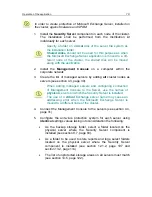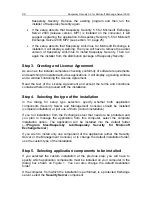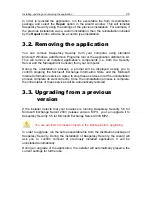
10
Kaspersky Security 5.5 for Microsoft Exchange Server 2003
builders, vulnerability scanners, password cracking programs, and other
types of programs for cracking network resources or penetrating a system.
Although malicious programs are distributed mainly via email and the Internet, a
floppy disk or a CD can also be a source of infection. Therefore, the task of
comprehensive protection from potential threats now extends far beyond simple
regular scans for viruses, and includes the more complex task of real-time anti-
virus protection.
Another threat that e-mail users face daily is spam.
Spam
is anonymous junk e-
mail. Spam includes mailings that are marketing, political and provocative in
nature and e-mails asking for assistance. Another category of spam includes e-
mails that ask one to invest large amounts of money or to get involve in pyramid
schemes, e-mails aimed at stealing passwords and credit card numbers, and e-
mails that ask to be sent to friends (chain letters), etc. Spam significantly
increases the load on mail services and increases the risk of losing information
that is important for the user. Spam can be roughly divided into four categories:
•
Formal messages
– messages that are automatically generated and sent
to recipients by automated mail program functions (as, for example,
notifications of undeliverable messages or confirmation of the user's
registration at some Internet website);
•
Probable SPAM
- messages that can not be unambiguously identified as
SPAM, but that raise suspicions when checked (for example, some types
of mass mailing and advertising messages);
•
Obscene messages
– messages that contain obscene language;
•
SPAM messages
– message that definitely contain SPAM.
1.2. The purpose and major
functionality of the application
Kaspersky Security 5.5 for Microsoft Exchange Server 2003 (hereinafter referred
to as
Kaspersky Security
) is designed to ensure protection of mailboxes and
public folders located on Microsoft Exchange Server 2003 (hereinafter
Microsoft
Exchange Server
) against malicious programs and unsolicited e-mail messages
(SPAM).
Kaspersky Security performs the following functions:
•
scanning and analyzing incoming and outgoing e-mail messages
for the
presence of malicious objects. This analysis processes the bodies and
attachments of e-mail messages. Depending on the settings configured,
the application will disinfect or delete a malicious object or will add a
warning message to such objects;











































